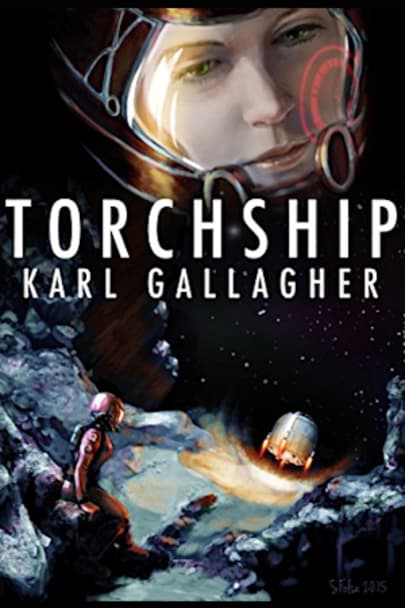A captain who’ll take any job if there’s enough money in it.A pilot with an agenda of her own.And a mechanic with an eye on the pilot.The crew of the Fives Full are just trying to make enough money to keep themselves in the black while avoiding the attention of a government so paranoid it’s repealed Moore’s Law. They’re not looking for adventure in the stars . . . but they’re not going to back … they’re not going to back down just because something got in their way.
more



Imagine, if you will, a Firefly that did not suck…. and that it is written by David Weber, before Weber’s world became Game of Starships with 500 characters you can’t remember.
We cover five missions / stories, but they all build on each other. The opening deals with a bunch of tourists … which turns into a cat and mouse chase among asteroids, a shoot out, and some additional SCIENCE!
Events that take place during #1 lead to the next mission with Terraformers … called “Kitty Chow.” Yes, really. Trust me, you won’t see this coming.
“Kitty Chow” leads to several bits of business in the next arc of stories, with Pilgrims, the Treasure of the Sierra Madre …. IN SPACE … and then Hitchhikers. How do you have hitchhikers in space? Heh heh heh.
There are several interludes that take place in between the missions of the torch ship in question, and they both add to the narrative, and provides some exposition. This is important, since there is little in the way of exposition here. There is just enough data here to get you through the story, but nothing else. “The Fusion worlds” are paranoid about technology, because the AIs revolted. Why did the AI revolt? No idea. We don’t need to know. We just need to know that they dislike humans.
But dang, this was fun. Granted, we don’t have the scene-chewing, over the top characters from Firefly, but we also don’t have their angsty BS. The crew of the Fives Full are … generally well-adjusted individuals. The story doesn’t leave you wanting, but it does leave you with a desire to know more about the world, and what happens next to our heroes.
On the one hand, I would say that this is hard SF — our heroes plot courses with slide rules, we have terraforming (right now, it’s mostly done by Israel), AIs, genetic engineering and using elements for fuel. I think the only thing that isn’t merely an extension of current technology is translating through space via various and sundry portals. But this man has planets listed with their gravity well intensity. Who does that? Answer: an MIT grad with an engineering degree.
However, to say that this is hard SF would be terribly mislabeling it. Much of hard SF is so techy, you’d be hard pressed to find character or culture among the people and places. Here? Here, there is something for everybody. There are multiple systems of government, from an auctionocracy (yes, they auction off seats, it’s half the tax income for the year) to representative government, et al. The cultures are clear, and unique, and varied all over the place. It’s a wonderful array of stuff here, and it’s obvious that Karl has put in plenty of time contemplating … everything.
One problem I have with this particular novel: why are they broken up into short stories instead of chapters? It reads continuously. Also, the opening few pages (less than five) are disorienting. They do feed into the story, and any confusion from the opening is resolved by the end, so no worries there. It may make it a little difficult for some people to get into the novel initially. Don’t worry about it, just push through the first five page (okay, more like page 5, 6, and 7) and you’re good.
Anyway, I’d recommend it. I’m going to work on the sequel next. But while I do that, read through Torchship now.